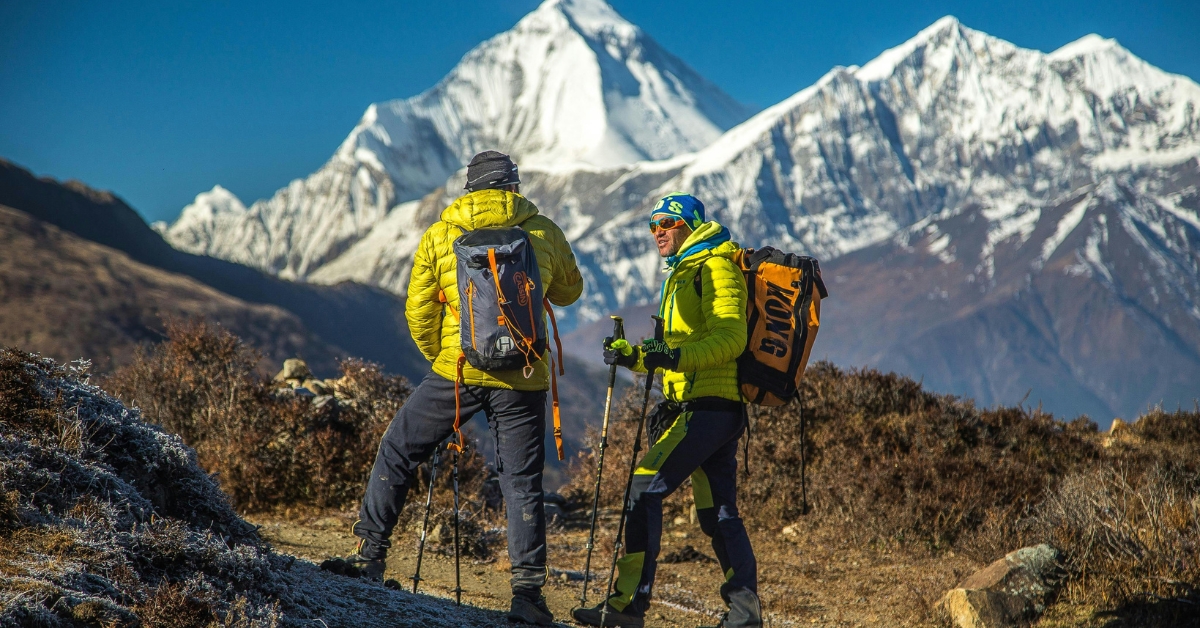Did you know that a simple item like a headlamp can actually be more important than your smartphone in the mountains? Trekking isn’t about having the latest gadgets or stuffing your pack with random gear. It’s about making thoughtful choices that support your safety, comfort, and energy on the trail.
Many hikers learn this the hard way. They set out thinking a few snacks and a water bottle were enough, only to face freezing winds, unexpected rain, or a trail that stretched longer than expected. That’s when you realize what really matters.
This article breaks down the essential items every trekker should carry when venturing onto mountain trails.
The Right Backpack Matters
First things first, your backpack needs to fit you. Not the average build, not your friend’s size, you. Look for something with padded straps, adjustable frames, and good back support. If you’re out for several days, internal frame packs help distribute weight better. For shorter hikes, a 20 to 35-liter daypack usually does the job.
What matters most is how it sits on your back when fully loaded. Even the most rugged gear feels useless if your backpack cuts into your shoulders after the first hour.
A Dependable Light Source
Once it starts getting dark, even familiar paths look unfamiliar. Don’t rely on your phone flashlight; it’s not bright enough and drains your battery. A headlamp gives you hands-free visibility and is a must on every trip, even if you don’t plan on hiking after sunset.
Some of the most trusted options in the trekking world are Black Diamond headlamps. Known for their durability and long battery life, they’re lightweight but powerful. Several models are available that feature adjustable brightness and red-light settings for enhanced night vision. Keep in mind that a solid headlamp can make all the difference when setting up camp after dark or navigating tricky terrain.
Carry Enough Water and a Backup Plan
You can’t rely on finding clean water along the trail, especially in higher altitudes. Always carry enough water for your trip and bring a purification method as backup. Portable filters, UV pens, or even water purification tablets take up almost no space and can save you from dehydration or illness.
A collapsible water bottle or hydration bladder helps you sip as you move, which keeps your energy up during climbs. If you’re unsure about the water source, do not take risks. It only takes one mistake to get seriously sick in the middle of nowhere.
Pack Food That Fuels You
Snacks aren’t just for comfort. They’re fuel. Pack calorie-dense foods that are lightweight and won’t spoil. Think trail mix, protein bars, jerky, dried fruits, and nut butter. For multi-day trips, dehydrated meals are light, filling, and easy to cook with just boiling water.
Keep some quick-grab snacks accessible without having to open your entire pack every time you feel low on energy. Eat small portions often to maintain steady stamina during long climbs. Always carry a little more than you think you will need, just in case.
Dress in Layers, Not in Bulk
Mountain weather often ignores the forecast. Begin with base layers that pull moisture away from your skin, then add a warm mid-layer such as fleece or down. Top it off with an outer layer that blocks wind and repels water.
You don’t need a closet full of clothes, just smart choices. One set of dry clothes to sleep in, one to hike in, and an extra layer for warmth. Also, don’t forget a beanie and gloves. Even in summer, nights can turn icy fast above 2000 meters.
Choose quick-drying fabrics instead of cotton, which holds moisture and cools you down too fast. Layers let you adjust quickly when the temperature changes without slowing down your pace.
Wear Solid Boots and Pack Extra Socks
Your feet take the worst of it. Invest in boots with ankle support and a good grip for added stability and comfort. Break them in before your trip, or you’re signing up for blisters and misery.
Always carry at least one extra pair of socks. Dry feet are happy feet, and after crossing a stream or sweating through a long day, changing into clean socks can feel like magic.
Wool or synthetic socks are better than cotton because they keep warmth even when wet. If your feet start to feel hot spots forming, stop and deal with them right away.
Final Thoughts
Trekking in the mountains isn’t just about reaching a summit or ticking off a trail; it’s about being prepared for the wild in every way. The right gear gives you the freedom to enjoy the views, handle the tough parts, and stay safe no matter what comes your way.
Carry light, pack smart, and always respect the trail. The mountains don’t care who you are or how experienced you claim to be. But if you come prepared, they just might reward you with the kind of silence, beauty, and peace that’s hard to find anywhere else.







